Speakers
Learn Everything About
the Speakers
Everything you need to know, from Speaker information to Session objectives, right at your fingertips.
† Denotes speaker with financial and/or beneficial interest in any products or services related to their presentation.
Thursday's Speakers
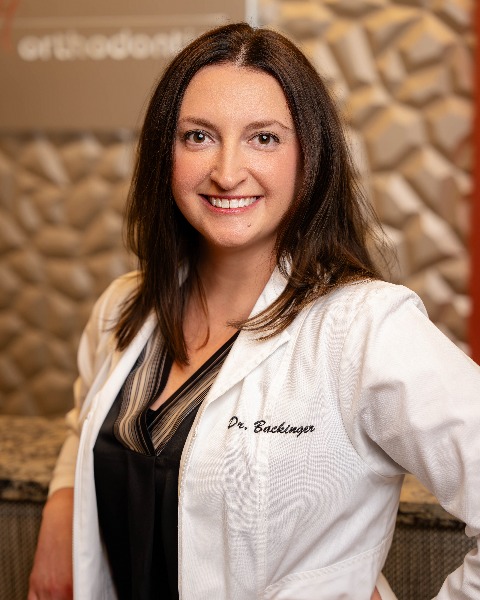
Dr. Jessica Backinger
Employee management can be an absolute headache. However, with a few simple techniques, you can build the team of your dreams. This presentation will teach you how to use personality profiling to effectively hire, train, coach, and maintain your employees. So join me for a lecture that will help you create the office culture you have always wanted.
Learning Objectives:
- Define the 4 main personality types.
- Outline the steps to create a DiSC Personality Profile culture.
- Explain how personality profiling can be used in the hiring process.
- Create a plan on how to improve their team building.
Jessica Backinger is a native of Michigan. She received her Bachelor of Arts from Kalamazoo College, attained her Doctor of Dental Surgery degree from University of Detroit Mercy School of Dentistry and completed her Certificate in Orthodontics at the University of Medicine and Dentistry of New Jersey (now Rutgers) in 2013. After graduation she returned to her hometown and purchased an orthodontic office, Summit Orthodontics. After a year she purchased an additional orthodontic practice to help grow her small orthodontic empire. In 2019 she completed her dream project, a 15,000 square foot building to house her growing orthodontic practice and an additional pediatric dental office. In 2024, Jessica opened a satellite practice in the rural community of Charlotte Mi. She is passionate about helping the next generation of young orthodontists and teaches part time at the orthodontic department of UDM. Her lecture series focuses on the Business of Orthodontics (Practice Acquisition, Transition, and Management). At work she enjoys improving the lives of her patients, staff and community. When not working, she likes to golf, swim, travel, read and spend time with her family. Jessica is married to her husband Douglas, and has two children Sophia age 9 and Connor age 7.
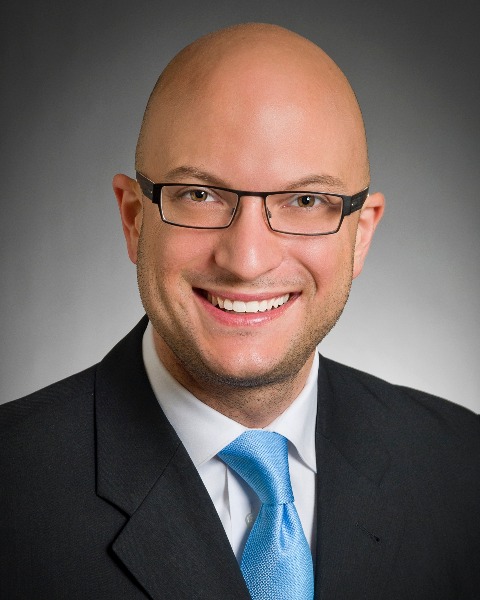
Dr. Sebastian Baumgaertel †
(Sponsored by Dentaurum)
MARPE has become an integral part of my orthodontic practice and I’d like to share with you what I’ve learned over the roughly ten years of using MARPE. From case selection to appliance design and clinical protocols, this lecture will provide valuable insights into MARPE use in private practice.
Learning Objectives:
- Identify cases that are appropriate for MARPE treatment.
- Distinguish between different MARPE appliances.
- Apply various MARPE appliances.
- Evaluate the risks and benefits of MARPE.
Dr. Baumgaertel has lectured nationally and internationally on orthodontic mini-implants, Cone Beam Computed Tomography, and the Invisalign appliance. He acts as a reviewer for a number of high-profile journals such as the American Journal of Orthodontics, The Angle Orthodontist, and the European Journal of Orthodontics, but has also contributed substantially to the current literature himself by authoring over twenty peer-reviewed scientific articles, multiple book chapters and having authored and co-edited two orthodontic textbooks.
Dr. Baumgaertel is the owner of Mountain View Orthodontics in Longmont, CO, a Clinical Associate Professor at Case Western Reserve University in Cleveland, OH and a lecturer at the University of Melbourne. In addition, he is a certified orthodontic specialist in Germany and Canada.
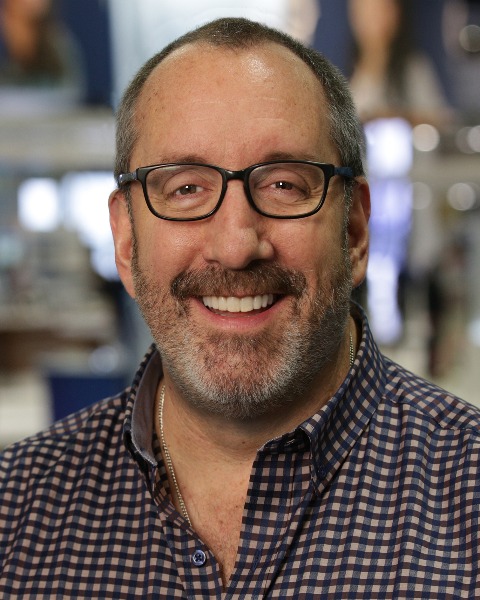
Mr. Jeff Behan
A practice’s ability to create compelling marketing content right in the office can be the fast-track to marketing dominance. Helping doctors and teams find their unique style and approach will be explored as I reveal pro secrets for lighting, filming, interviewing, and creating compelling, personality-driven videos and online content without ever making doctors toot their own horns. Bring your smart-phones with you to participate in hands-on learning.
Learning Objectives:
- Discover Your Practice’s Unique Voice: Learn how to identify and showcase the authentic style and personality of your practice in marketing content that resonates with patients and builds trust.
- Master Pro-Level Content Creation Techniques: Gain insider tips on lighting, filming, and interviewing to produce professional-quality videos and online content using simple tools like your smartphone.
- Engage in Hands-On Video Creation: Participate in an interactive exercise to create compelling, personality-driven content that promotes your practice without relying on self-promotion from the doctor.
Jeff Behan is a dynamic communications and consumer marketing specialist, renowned for his engaging and relevant presentations. His expertise spans internal and external communication, patient connection strategies, referral-building, and practice branding.
With a career that includes collaborations with global giants like Intel Corp. and Delta Airlines, as well as leading names in the dental and orthodontic industries—including Align Technology, Ormco, Straumann, and Henry Schein—Jeff brings a wealth of diverse experience to the stage.
As the principal member of VisionTrust Communications, Jeff has crafted custom marketing solutions for more than 1,000 orthodontic practices worldwide. He is also the co-founder and partner of Orthodontic Revolution and serves as the founder, President, and CEO of VisionTrust International, an NGO supporting orphaned and vulnerable children across 11 countries.
In addition to his professional endeavors, Jeff is the Vice President of Smile for a Lifetime, a nonprofit organization dedicated to providing free orthodontic care to deserving children throughout North America.
Whether addressing industry leaders or working in the trenches with orthodontic teams, Jeff’s insights resonate with audiences, leaving them equipped and energized to elevate their practices and their impact.
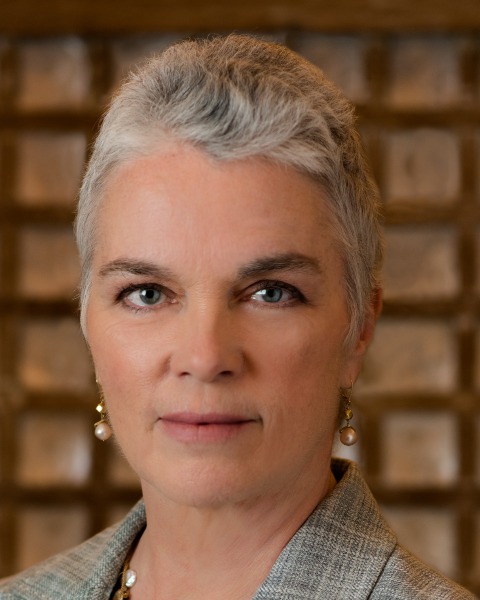
Dr. Jennifer Buchanan
Hormone changes with menopause are profound, changing the resiliency of the musculoskeletal system and sensitivity in the central nervous system. Understanding the all-body affects of estrogen and progesterone help us anticipate potential problems and predict outcomes for our patients in orthodontic treatment.
Learning Objectives:
- Recognize potential problems their menopausal patients might encounter in the course of orthodontic treatment.
- Identify the changes with menopause that affect joint health and pain sensitivity.
- Manage treatment expectations for their patients in menopause.
Jennifer Buchanan is an orofacial pain specialist with a private practice in San Rafael California. She is the Director of the Center for Orofacial Pain and Dental Sleep Medicine at the University of California San Francisco. At the University she teaches courses in temporomandibular disorders, orofacial pain, and dental sleep medicine to dental students, dentists, and physical therapists.

Dr. Willy Dayan †
(Sponsored by Angel Aligner)
Protocols that will work faster and better. With over 20 years of experience in digital aligner orthodontics, Dr. Dayan will share the protocols he uses, so cases treat faster and more efficiently from the start. Having a strong foundation in aligner biomechanics is essential for success with aligner orthodontics, and differentiating the priorities of the individual case will allow the clinician to know how to customize the force systems to treat different malocclusions.
Learning Objectives:
- Distinguish the starting priorities for different malocclusions, so that cases treat faster and more effectively from the start.
- Evaluate and assess how to customize the aligners to support corrections in different planes of space depending on the patient’s individual needs.
- Perform modifications to modify aligners using the robust Iortho Treatment Planning Software from Angel Aligner.
Dr. Dayan received his DDS in 1986 and his diploma in Orthodontics in 1991 both from University of Toronto.
In addition to his private practice in orthodontics, Dr. Dayan is also a clinical instructor of Orthodontics. His teaching expertise lies in areas of: Aligner orthodontics, Aligner Biomechanics, Rehabilitative Orthodontics in preparation for Cosmetic Reconstructive Dentistry, Patient Interviews and Treatment Presentation Skills. He has been a guest lecturer at multiple conventions and meetings worldwide and has also been teaching with multiple webinars online.
Dr. Dayan began providing aligner orthodontics in his practice in the fall of 1999, has treated over 5000 of his own cases, and coached over 50,000 cases in his coaching site. Dr. Dayan currently teaches orthodontists internationally how to achieve excellent results in the most challenging cases.
Dr. Dayan also coaches many clinicians about their own orthodontic cases, helping them to customize their own orthodontic plans, and aligner treatment plans for greater success and better outcomes through his online coaching at YourOrthoCoach.com.
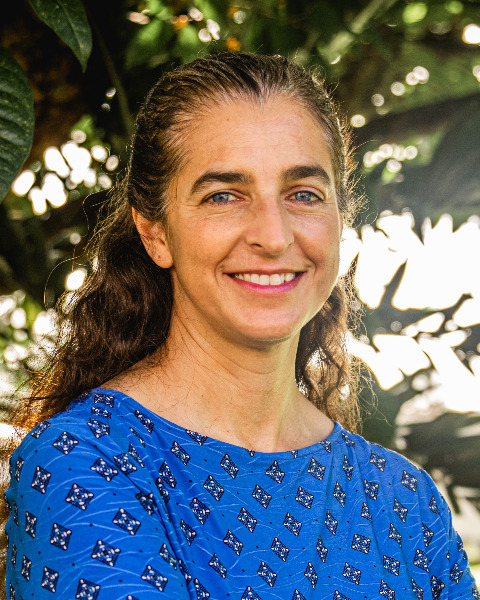
Dr. Cheryl Gansecki
The Hawaiian Islands are the product of one of the oldest and largest hot spots on Earth. They follow a pattern of evolution from their initiation as undersea eruptions, undergoing rapid growth to massive volcanic mountains, to their aging, eroding, and crowning with coral reef, through to their final demise by subduction. Distinct types of eruptions characterize these volcanoes. Kīlauea, the youngest subaerial Hawaiian volcano – and one of the world’s most active – typifies the “shield-building” or fastest growth stage with almost constant eruptions of fluid lava. This lava presents numerous hazards for those living on the Hawaiʻi Island, but also attracts millions of visitors to see the incredible spectacle of creation.
Learning Objectives:
- Describe the origins of the Hawaiian Islands.
- Identify the stages of development of Hawaiian volcanoes.
- Experience video footage of recent eruptions of Kīlauea. volcano.
Volcanologist Cheryl Gansecki teaches earth science courses at the University of Hawaiʻi–Hilo and intensive volcanology field camps in Hawaiʻi for the Black Hills Field Station. She holds a BA in earth science and archaeology from Wesleyan University and a PhD in geology from Stanford University. She works with the Hawaiian Volcano Observatory to monitor Kīlauea Volcano and was a field team leader during the devastating 2018 eruption. Her current research focuses on using the chemistry of lava erupted from Kīlauea to reveal changes in the magma feeding eruptions and to help predict its eruptive behavior. She has also done research on the giant Yellowstone magma system and on little Nisyros volcano in Greece. She ran a film company for many years, filming and producing educational videos about volcanoes, and recently co-authored a book on the roadside geology of Hawaiʻi.
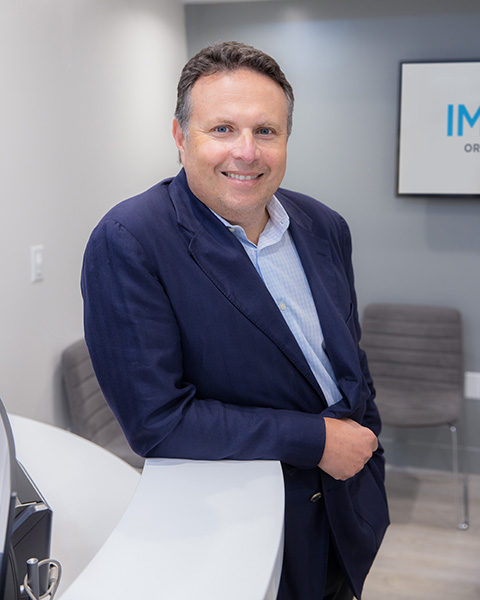
Dr. Yan Kalika
Like chess, successful orthodontic practice growth requires foresight, precision, and the ability to adapt with each move. This dynamic lecture draws parallels between the strategic mindset of chess and the evolving landscape of orthodontics—where AI-powered tools, Straumann’s integrated digital ecosystem, and ClearCorrect’s aligner innovations are redefining what’s possible. Learn how to leverage these advancements to enhance clinical efficiency, elevate patient outcomes, and scale your business with confidence. Discover how staying three moves ahead isn’t just good strategy—it’s great practice management.
Dr. Yan Kalika is the founder and Chairman of Image Specialty Partners and is also the founder of Image Orthodontics, a leading destination for innovative, technology-forward orthodontics and personalized patient experience. For over 20 years, Image Orthodontics’ team of world-class orthodontists and staff have provided braces, Invisalign, clear braces, TMD/TMJ, and sleep apnea treatments, and transformed the smiles of thousands of adults, teens, and children in California. Image Specialty Partners is a dental partnership organization affiliated with 44 multi-specialty practices. Founded and led by world-class doctors, Image Specialty Partners is committed to its mission to improve quality of life by providing its partners with mentoring and comprehensive administrative services so that they can deliver the highest level of care for their patients.
Dr. Yan Kalika, DMD, MS, is a certified specialist in orthodontics and dentofacial orthopedics. He received his dental degree from Harvard School of Dental Medicine in 1998. In addition, he completed a fellowship in Washington D.C. in the field of dental health policy. Dr. Kalika completed his orthodontic training at the University of California at San Francisco where he received a specialty certificate in orthodontics and facial orthopedics and a master’s degree in oral biology.
He is an active member of the American Dental Association, the California Dental Association, the American Association of Orthodontics, the Pacific Coast Society of Orthodontics, and the San Francisco Dental Society. Additionally, Dr. Kalika is an Associate Clinical Professor at the University of California at San Francisco, Division of Orthodontics.

Dr. Zhanna Konovalenko
Time Freedom Method: Create a Schedule That Actually Works
Every dental professional knows the struggle: running behind schedule, staying late for paperwork, and missing important family moments. But what if you could excel in your role without sacrificing your personal life? Dr. Zhanna Konovalenko shares her practical, tested method that helped her dental teams manage multiple practices efficiently while maintaining work-life balance.
Perfect for all members of the dental team looking to improve their time management skills and create more balance in their lives.
Learning Objectives:
- Master the three-step productivity system that transforms overwhelming to-do lists into a clear and actionable schedule.
- Break free from time-wasting behaviors by recognizing and eliminating habits that steal your precious hours.
- Design a schedule that finally puts you first while balancing family and work, so you can thrive in all areas of life without burning out.
- Boost your daily productivity with proven techniques helping you accomplish more in less time while maintaining energy and focus.
Dr. Zhanna Konovalenko is a board-certified orthodontist and certified life coach who embodies the intersection of clinical excellence and personal development. After graduating summa cum laude from Charles University in Prague, she navigated a remarkable journey from moving to the US alone at age 25 to becoming a distinguished orthodontist and entrepreneur.
A Diplomate of the American Board of Orthodontics, Dr. Konovalenko holds a Certificate in Orthodontics and Master of Science in Oral Biology from Temple University. Her expertise spans multiple orthodontic systems, including Invisalign, conventional braces, and lingual orthodontics. While maintaining a thriving clinical career as an orthodontist, she founded ZK Coaching LLC and created the No Stress DDS program, specifically designed to help women dentists achieve work-life harmony.
Dr. Konovalenko’s unique approach to efficiency allows her to manage multiple professional ventures while raising two children – all within a four-day work week. Her multilingual capabilities (fluent in English, Russian, Ukrainian, and Czech) and marathon-running background reflect her dedication to continuous growth and achievement. Through her work as both clinician and coach, she continues to inspire and empower healthcare professionals to transform their lives, proving that career excellence and personal fulfillment can go hand in hand.
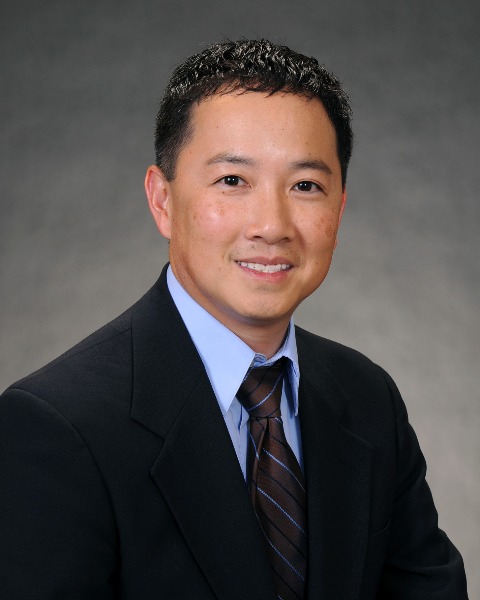
Dr. Tung Nguyen
The orthodontic profession has seen an abundance of technological introductions over the past few decades. Changes that were historically impossible with orthodontics are now possible through skeletal anchorage, 3D imaging, 3D printing, and/or customized appliances. This lecture will discuss two of the latest innovations: Bone Anchored Herbst for treatment of Class II malocclusion and autotransplantation for early replacement of missing teeth. This lecture will introduce new clinical data for these new techniques and question whether we can grow bone and reduce the need for orthognathic surgery.
Learning Objectives:
- Evaluate a new orthopedic method to correct Class II skeletal malocclusion using Bone Anchored Herbst.
- Recognize the limits of tooth movements and periodontal side effects of exceeding these limits.
- Propose an updated protocol for autotransplantation using 3D technology.
- Outline new applications for autotransplantation, including replacement of missing or traumatized teeth, management of impacted canines, and options for craniofacial clefts.
Dr. Tung Nguyen completed his dental training at Tufts University and received his master’s degree and Certificate in Orthodontics at the University of North Carolina. He completed the William R Proffit Teaching Fellowship before joining the faculty at the University of North Carolina. He is the Zaytoun Distinguished Professor and Program Director at UNC, a Diplomate of the American Board of Orthodontics and a member of the Angle Society of Orthodontists. He was awarded the BF and Helen Dewel Award for best clinical research from the American Journal of Orthodontics and Dentofacial Orthopedics for the work done on Class III bone anchors. Dr. Nguyen has over 100 publications and book chapters and has lectured nationally and internationally. His research interests are 3D imaging, technology and dentofacial orthopedics.
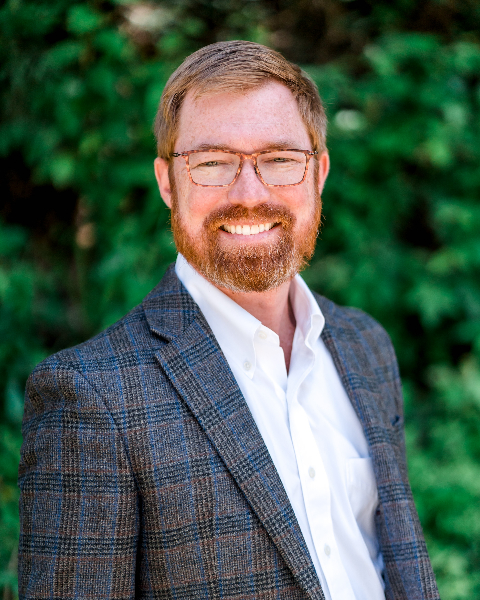
Dr. Rick O’Neil †
(Sponsored by Solventum)
Join Dr. Rick O’Neil to explore a groundbreaking innovation: Clarity™ Precision Grip Attachments. These attachments serve as an ideal enhancement to Clarity™ Aligners within The Solventum Oral Care Portal. Discover effective treatment strategies for diverse cases while also improving the efficiency of your practice.
Learning Objectives:
- Discover how to optimize your workflow efficiency with pre-loaded, 3D-printed, fully cured composite attachments customized for each patient’s unique anatomy.
- Discover ways to increase the consistency and predictability of your aligner treatment attachment using the combination of Clarity™ Aligners and Clarity™ Precision Grip Attachments.
- Master treatment planning, attachment placement, refinements and case management.
Dr. Rick O’Neil lives in Fairhope, AL. He has three practice locations in the surrounding South Alabama area. He and his wife Marjorie have four children. Dr. O’Neil graduated with a B.S. in Zoology from Auburn University and received both his dental and orthodontic education at the University of Alabama at Birmingham. Dr. O’Neil’s orthodontic interests include the integration of digital technology and optimal esthetics in patient care. His time is occupied by his family, friends, patients and church activities. And in his “spare time”, he enjoys hunting, fishing, and woodworking.
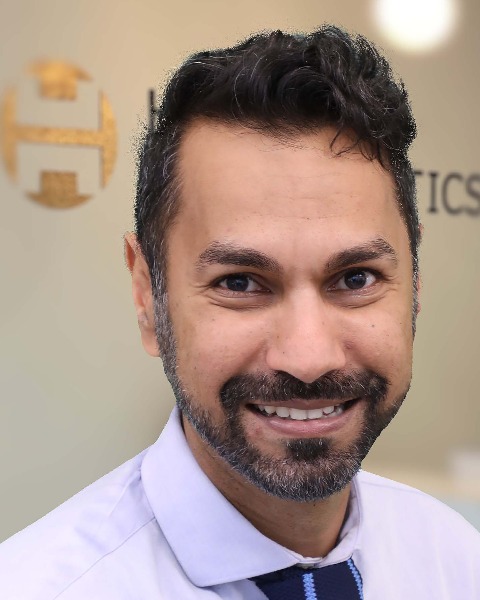
Dr. Sid Vora
The intersection of orthodontics and pediatric obstructive sleep apnea (pOSA) has become a focal point of clinical discourse and public interest. Emerging social media narratives and patient demands have propagated claims about “jaw expansion” as a universal solution for pediatric airway concerns. This presentation critically examines the current scientific landscape, addressing key questions about orthodontic intervention in pediatric airway management.
Through a comprehensive review of contemporary literature, we will: analyze the pathophysiology and clinical implications of pOSA, critically evaluate existing evidence for orthodontic treatment modalities, deconstruct the claim that orthodontic expansion represents a standardized intervention for pOSA, and identify gaps in current research and potential future investigative directions.
The presentation will provide orthodontic practitioners with an evidence-based framework for understanding pOSA, distinguishing between clinical recommendations supported by robust research and hypotheses requiring further scientific validation.
By synthesizing current research, this presentation aims to enhance clinical decision-making and promote a nuanced, scientifically grounded approach to pediatric airway management in orthodontic practice.
Learning Objectives:
- Define the aetiology, pathophysiology, and clinical implications of pediatric obstructive sleep apnea (OSA) relevant to orthodontic practice.
- Analyze and critically evaluate current evidence supporting interdisciplinary treatment options for pediatric sleep apnea.
- Critically assess the literature that demonstrates that orthodontic expansion is not a universally accepted treatment modality for pediatric obstructive sleep apnea.
- Investigate and discuss additional orthodontic considerations related to pediatric airway management.
Dr. Vora obtained his BDS from Mumbai India, a Ph.D. in Oral Biology from Boston University, and an MSc in Orthodontics from the University of Washington. He was a Senior Fellow at Seattle Children’s Research Institute and a part-time Lecturer at the University of Washington, before moving to the University of British Columbia, Canada in 2016. Dr. Vora’s current title is Associate Professor with tenure. He is a Fellow of the Royal College of Dentists (Canada) and a Diplomat of the American Board of Orthodontics. His research interests lie in craniofacial growth and development and odontogenesis, both at a molecular and morphological level. His work emphasizes using 3D imaging, advanced morphometric analyses and machine learning, in comprehensive phenotypic evaluation of craniofacial and dental morphogenesis.
Friday's Speakers
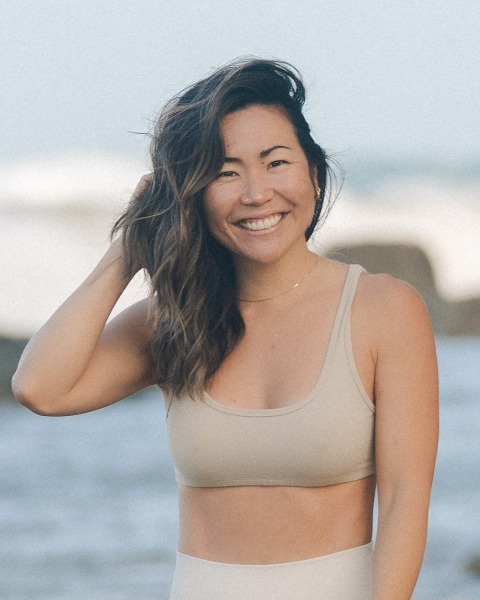
Ms. Alyssa Chang †
In this session, we’ll explore the science of pain as an action signal—a message from your brain indicating a perceived threat. Using the powerful “threat bucket” metaphor, we’ll unpack how stress, movement, and sensory input contribute to pain and overwhelm. You’ll also learn about the neural hierarchy of vision, vestibular function, and proprioception—your brain’s primary tools for assessing safety and control.
Importantly, this session isn’t just about theory—it’s about practice. I’ll guide you through 3–5 brain-based drills designed to shift your nervous system, reduce your brain’s perceived threat level, and change your pain signals in real time. These simple, effective techniques will empower you to create relief and take steps toward a more pain-free body.
Whether you’ve been battling persistent symptoms or are simply curious about how neuroscience can help, this session will provide you with tools and insights to start your journey toward lasting relief.
Learning Objectives:
- Explain the neuroscience of pain, including how the brain and nervous system contribute to chronic pain cycles and why traditional approaches may fail to provide lasting relief.
- Self-assess personal threat signals within the nervous system to better understand patterns contributing to pain and discomfort.
- Experience practical brain-based techniques to calm the nervous system, build resilience, and create sustainable relief from pain and emotional overwhelm.
Alyssa Chang is a Neuroscience Health Coach based in Honolulu, Hawaii, with a focus on helping individuals reconnect with their bodies and health through brain-based practices. Since 2012, she has been studying neuroscience through Z-Health Education, where she learned techniques such as vision therapy, breathwork, vestibular training, and cranial nerve drills. These tools support individuals dealing with anxiety, chronic pain, fatigue, brain fog, and inflammation.
Alyssa’s approach is rooted in compassion and science, emphasizing the unique ways each person’s brain and body communicate. She trusts her clients as the experts of their own experiences and works to guide them back to a sense of trust and intuition within their bodies.
Her background also includes a 200-hour Yoga Teacher Training, which informs her integration of trauma-informed yoga practices into her work. By blending neuroscience with movement and mindfulness, Alyssa supports individuals in easing physical and emotional discomfort while fostering a deeper connection to themselves.
Through her work, Alyssa encourages a shift away from conventional health and fitness narratives, focusing instead on honoring the body’s inherent wisdom and resilience. She is passionate about helping others rediscover a sense of ease and balance, empowering them to feel more at home in their bodies.

Dr. Onur Kadioglu
3D imaging has been a great addition to orthodontics as it has numerous applications that are useful in daily practice, diagnosis, treatment planning, and patient outcomes. Through various modalities, orthodontists can gain additional knowledge on craniofacial structures, dental relationships, incidental findings, and airway assessments. These can help analyze difficult cases with regard to skeletal and dental structures. Deliberating these technologies through an evidence-based approach may improve the quality of orthodontic treatment and efficiency.
Learning Objectives:
- Identify various applications of 3D imaging in daily orthodontic practice, including diagnosis, treatment planning, and assessment of patient outcomes.
- Assess the role of 3D imaging in analyzing skeletal and dental structures.
- Discuss how evidence-based applications can be utilized for improved treatment outcomes and efficiency in orthodontic practice.
- Demonstrate practical strategies for integrating 3D imaging technologies into daily orthodontic workflows.
Dr. Kadioglu is Professor, Ram S. Nanda Endowed Chair, and the Chair of the Orthodontic Program at the University of Oklahoma. He received his dental degree from Istanbul University and MS in Orthodontics from the University of Oklahoma. During his tenure, he received the Full Time Faculty Teaching Fellowship Award from the AAO and the Robert E. Gaylord Teaching Fellowship Award from the AAOF. He has received the Outstanding Professorial Achievement Award from OU’s College of Dentistry for his commitment to excellence in teaching.
He has published over 30 articles in peer-reviewed journals, seven chapters, and co-authored an orthodontic textbook on 3D imaging. He had served on over 60 graduate thesis committees. He also serves on the editorial review board of the American Journal of Orthodontics, the Angle Orthodontist, and the European Journal of Orthodontics. He was recently appointed to the Clinical Advisory Council of the Journal of Clinical Orthodontics.
Dr. Kadioglu has served the SWSO for 15 years as the Editor of the Newsletter and finally on the Executive Committee. He recently completed his tenure as President in 2024. He recently received the J. Mark Felton Leadership Award from the SWSO. He was recently appointed Director of the American Board of Orthodontics, representing the SWSO. He continues to teach at the Tweed Course in Tucson, and is a member of OKU, the American and International College of Dentists.
He is a proud father of two boys, Arden and Aren. His wife, Sezin, is a Professor of engineering at UCO.
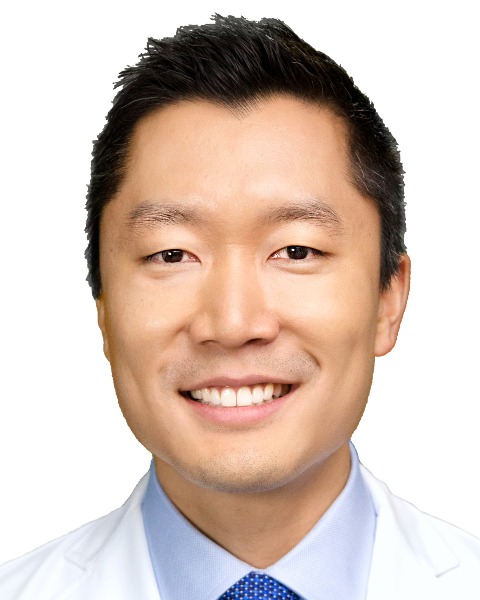
Dr. Jay Lee
Two-jaw orthognathic surgery was historically, by necessity, carried out maxilla-first. With the advent of rigid fixation in the late 1970s, the option of mandible-first sequencing became viable, and this approach gained popularity with the seminal publication of Cottrell and Wolford in 1994. The relatively recent development of custom 3-D printed titanium fixation plates calls into question the most appropriate sequence. Both standard and custom fixation of osteotomies, and maxilla-first or mandible-first sequencing are defendable options. How does the surgeon decide? What are the advantages and disadvantages of each option, and importantly, what are the post-operative ramifications for the orthodontist? Without marketing or bias, this presentation aims to provide the orthodontic specialist with an in-depth understanding of this process, so they can effectively communicate and plan treatment with their surgeon.
Learning Objectives:
- Describe the salient steps involved in 3-D virtual planning of maxilla-first vs. mandible-first surgery.
- Outline the advantages and disadvantages of maxilla-first vs. mandible-first surgery.
- Explain the potential post-operative adverse consequences of the chosen surgical sequencing.
Dr. Jay Lee was born and raised in Portland, OR where he was introduced to dentistry by his mother who was a dental lab technician. While in dental school at UCLA, he was introduced to the specialty of Oral and Maxillofacial Surgery by Dr. Robert Relle who had a practice limited to maxillofacial surgery. He completed medical school and residency at the University Texas Southwestern Medical Center/Parkland Memorial Hospital in 2017. After training, he joined Dr Relle and his partners at the Los Angeles Center for Oral and Maxillofacial Surgery. Currently, Dr. Lee has a practice limited to orthognathic and maxillofacial reconstructive surgery.
Dr. Lee is a Diplomate and Examiner of the American Board of Oral and Maxillofacial Surgery, a fellow of the American College of Surgeons (FACS), and a fellow of the American Academy of Craniomaxillofacial Surgeons.
Most of his time outside of work is spent with his wife and two daughters who are 2 and 4 years old. His hobbies include cooking, working on cars and spending time following his beloved Portland Trailblazers, Oregon Ducks and Los Angeles Chargers.
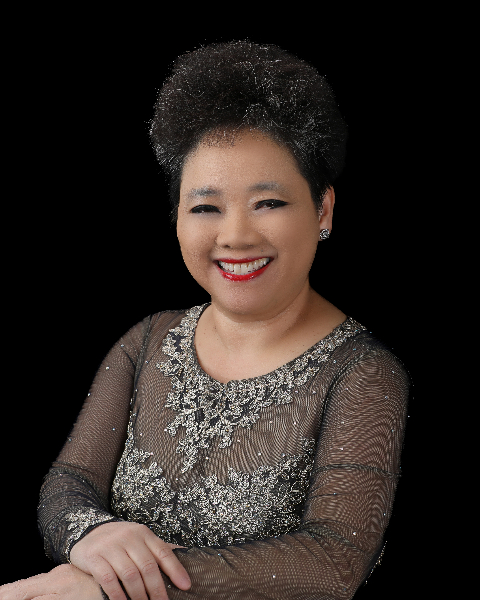
Dr. Emily Letran
Every day, a patient is bombarded with thousands of marketing messages . A practice owner must understand business metrics, follow intentional marketing strategies, and have the courage to position himself or herself as an authority providing exceptional services.
In this past faced, interactive, and action packed presentation, Dr. Emily Letran will share her strategies to market and manage the business, getting the team engaged and understand the business philosophy, implementing marketing systems , and turning the patients and referral offices into raving fans.
Learning Objectives:
- Define the touchpoints in customer service.
- Analyze marketing metrics.
- Assess and utilize multiple platforms to create influence and positioning.
Dr. Emily Letran is a serial entrepreneur, CEO of several multi-specialty dental practices, and private coach to many professionals. As an international speaker, she has been on TEDx and shared stages with countless business leaders including Sharon Lechter (Co-Author Rich Dad Poor Dad), Kevin Harrington (Shark Tank), Dr. Howard Farran (Dental Town), and Linda Miles (The Ultimate Mentor of Dentistry). She has been featured on several magazines , Dental Town, Global Woman, Top Doctor, The Profitable Dentist, See Beyond as well as the media, Yahoo!Finance, Forbes, USA Today, and FOX. She is a contributing writer for Dental IQ, DrBicuspid.com, and Dentistry Today. Dr Letran is a Certified Kolbe Consultant, a member of Forbes Coaches Council, and the Founder of Exceptional Leverage Inc., a global coaching and consulting firm. She hosts her signature events, ACTION To WIN seminar, in several countries, and shares her expertise in personal growth and business management through her programs. Dr. Letran has been knighted as a Lady of The Royal Order of Constantine The Great and Saint Helen for her work in philanthropy, inducted as a Fellow of the International College of Dentists for her contributions to the dental community, and currently enjoys practicing dentistry with her daughter in Huntington Beach, CA.
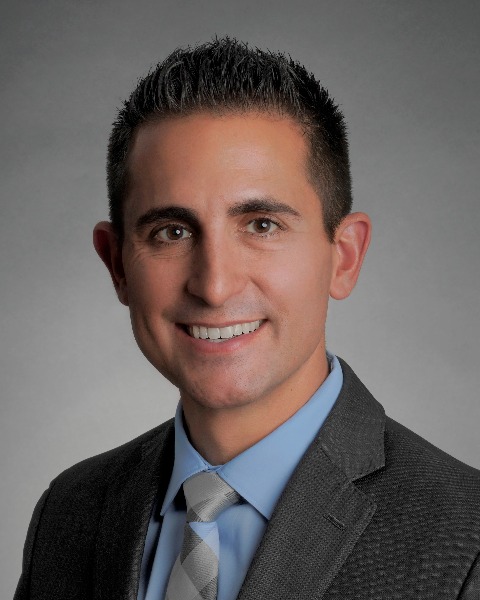
Dr. Jeremy Manuele †
MARPE (Miniscrew-Assisted Rapid Palatal Expansion) has revolutionized orthodontics, offering solutions to previously untreatable maxillary deficiencies. However, this groundbreaking approach isn’t without its challenges. In this session, we’ll explore the full spectrum of MARPE: why it’s a vital tool in modern orthodontics, how to navigate its complexities, and the extraordinary potential it holds for the future.
We’ll begin by addressing why MARPE is more essential than ever, delving into the clinical and aesthetic demands that drive its application. From there, we’ll tackle the reality of complications, examining real-world cases and offering strategies to overcome pitfalls, reduce risks, and achieve predictable outcomes. Whether it’s addressing patient-specific anatomy, troubleshooting technical failures, or managing adverse effects, this presentation provides actionable insights for every orthodontist.
But the story doesn’t stop there. MARPE opens doors to incredible possibilities, including vertical control, non-extraction treatments, and influencing airway health and midface aesthetics. We’ll look at its current applications and offer a glimpse into its future, including advancements in surgical and non-surgical techniques.
Whether you’re new to MARPE or a seasoned expert, this lecture will leave you with a deeper understanding of its transformative power. Join us to master the challenges, embrace the opportunities, and discover how MARPE can elevate your practice to new heights.
Learning Objectives:
- Explore the clinical and aesthetic indications for MARPE and its role in modern orthodontics.
- Identify common complications associated with MARPE and learn practical strategies to prevent and manage them.
- Explore advanced applications of MARPE, including vertical control, non-extraction treatments, and airway health improvements.
- Gain insights into the future of MARPE, including advancements in surgical and non-surgical techniques.
Dr. Jeremy Manuele, aka “Dr. J,” is a Las Vegas-based orthodontist, graduating from UNLV’s Dental School and completing his residency at LSU in New Orleans.
Following residency he returned to Las Vegas with his wife Nicole and their four children, practicing alongside Dr. R. Cree Hamilton and teaching part time at UNLV’s School of Dental Medicine.
Dr. J’s commitment to service runs deep, with over two decades in the Army National Guard, including a deployment to Ramadi, Iraq.
In his commitment to the orthodontic profession, Dr. J created and serves as course director for the MARPE 360 ONLINE COURSE.
Driven by a genuine passion for teaching, his focus continues to be on the professional growth of the orthodontic community as a whole.
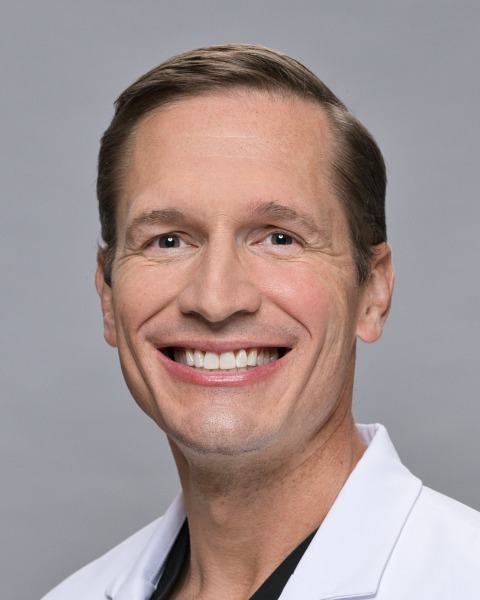
Dr. Brandon Martin †
(Sponsored by DIBS AI)
Tired of repositioning? Do you wonder what will “snap” first, you or that heavily detailed wire? Bracket placement and an individualized prescription are key criteria for efficient case management and smooth clinical days. Dr. Martin will demonstrate how to use readily available AI technology for optimal bracket placement. New software leverages real-time visualization of the predicted clinical result. Dr Martin will share techniques to modify the prescription of your favorite stock bracket to achieve an affordable, fully custom setup. Finally, he will review how customized fixed appliances can empower your team, elevate the patient experience, and optimize efficiency.
Learning Objectives:
- Demonstrate efficient and effective case completion by leveraging digital IDB systems for precise bracket placement.
- Modify the bracket base to create fully custom setups using your preferred stock brackets with real-time predictive outcomes.
- Integrate fixed appliance digital workflows into your office to improve the patient experience, empower your staff, enhance treatment outcomes, and improve overall efficiency.
Brandon D Martin, DDS, MS is a board-certified orthodontist and an active member of the American Association of Orthodontists (AAO). He lectures on the latest in digital orthodontics – primarily on how to implement predictive AI-driven technology to customize braces and aligner cases, effectively monitor treatment, and increase clinical accuracy. Dr. Martin and his team have been utilizing indirect bonding for all cases for over 10 years and have fully embraced the new capabilities made possible with digital indirect bonding. With an evidence-driven approach, Dr. Martin considers facial esthetics, function, airway, growth, and overall patient health to guide treatment decisions. Dr. Martin is a graduate of the UCSF School of Dentistry who then received his certificate in orthodontics and master’s degree from the University of Maryland. Dr. Martin serves on a task force for the California Association of Orthodontics. Dr. Martin practices at Alexander & Martin Orthodontics with offices in Rocklin, Roseville, and Sacramento, California.
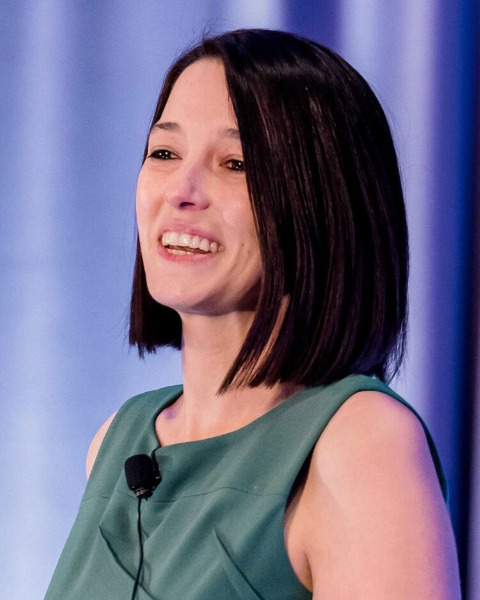
Ms. Nicole McFarlane
Just like orthodontics can transform a person’s smile and overall oral health by shifting the alignment of their teeth, we can also improve our own outcomes by simply changing our mindset and beliefs. This presentation will cover how we can get out of our own way and change our perspectives to improve our day to day in both the office and life in general.
Learning Objectives:
- Explore how their own perspective can help or hurt the way the practice runs.
- Discover how to be open-minded and change your practice without causing turmoil.
- Create a more positive day, each day, by changing their perspective.
Nicole McFarlane is the Practice Manager of Dunn Orthodontics and a mother of two young boys. Nicole has been in orthodontics since 2008 and joined the Dunn Orthodontics team in October 2014 as a Scheduling Coordinator. She quickly demonstrated her leadership and business acumen and by the summer of 2015, she had accepted the role as Office Manager. Nicole now manages a very busy two-doctor, four-location practice with 25+ employees. Dunn Orthodontics was listed among the Inc. 5000 Fastest Growing Private Companies and the Phoenix Business Journal’s Largest Family-Owned Businesses.
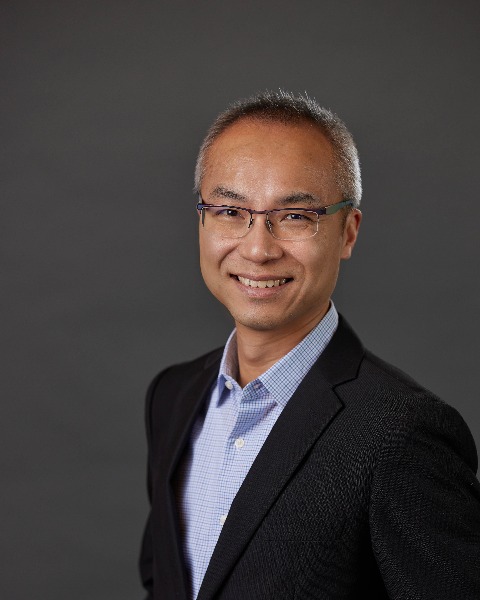
Dr. Samson Ng
Please join us for this interactive seminar designed to review oral lesions and dental therapeutics that orthodontists commonly encounter in a community practice. This seminar will reinforce the chair-side techniques for head & neck and intra-oral examinations. Techniques for written and photo documentation of oral lesions will also be discussed. The visual presentation and hands-on demonstrations of adjunctive evaluation tools will definitely make these topics interesting and educational. Topics include radiographic presentation of TMJ diseases, common benign oral lesions, the uncommon but need-to-know lesions, and microbial infections other than yeast.
Learning Objectives:
- Consolidate the clinical technique of performing an extra-oral and intra-oral soft tissue examination.
- Diagnose and manage non-odontogenic oral lesions commonly identified in a community setting.
- Recognize oral lesions/entities that should be ‘red flagged’, and discuss the proper initial management.
- Improve your record keeping for both patient care and integrity of your work, should it come into question.
Dr. Samson Ng is a dual-certified oral medicine specialist and oral & maxillofacial pathologist, holding certifications from both Canada and the United States. He currently serves as a clinical professor at the University of British Columbia, where he is affiliated with the Department of Dentistry and the Department of Otolaryngology at Vancouver General Hospital as a research clinician. Additionally, he consults for the Oral Oncology department at the British Columbia Cancer Agency and acts as a National Dental Specialty Examination (NDSE) examiner in Canada.
Dr. Ng maintains a private practice focused on comprehensive oral medicine and pathology consultations. His particular areas of expertise include oral mucosal diseases, temporomandibular joint disorders, and AI-driven topographic imaging & diagnostics. His clinical research has resulted in over 25 peer-reviewed publications, primarily focused on oral cancer diagnostics.
Outside of his professional life, Dr. Ng enjoys spending time with his wife, Dr. Phoebe Tsang (also a presenter at this conference), and their two children. He has diverse interests, including virtual reality photography and professional electronics.

Dr. Sheetal Patil
Have you ever felt the pressure of broadening your skill set, only to find yourself overwhelmed by the weight of new techniques and concepts? The process of incorporating maxillary skeletal expansion into clinical practice can seem daunting—like attempting to lift an immense load without the right support.
My objective today is to help you not only expand your clinical toolbox but to fundamentally transform your approach to skeletal expansion. Too often, practitioners attend lectures, absorb the material, and return to their practices without taking the next step. Whether due to uncertainty, hesitation, or the sheer complexity of implementation, many never begin applying these principles in their daily practice.
I invite you to join me on my journey into maxillary skeletal expansion. Together, we will demystify the process, distill key takeaways, and equip you with the confidence to begin incorporating these techniques immediately. My goal is simple: by the time you leave today, you will be ready to implement skeletal expansion—not tomorrow, but yesterday.
Learning Objectives:
- Identify appropriate patient cases for skeletal expansion.
- Describe a systematic, step-by-step approach to integrating skeletal expansion into clinical workflows.
- Explain the roles of both orthodontists and orthodontic team members in skeletal expansion treatment, including patient education and appliance management.
Dr. Sheetal Patil is a family friendly orthodontist with practices in Fremont and San Ramon, CA. With over 30 years of experience, she began her career in India, practicing general dentistry before moving to Jamaica, where she continued her practice in Kingston. Her passion for orthodontics led her to complete a two-year Fellowship in Craniofacial Research at the Arthur A. Dugoni School of Dentistry while working as a licensed dentist in California. She then pursued specialized orthodontic training at Jacksonville University, Florida, balancing her education with raising her two young sons.
As a Diplomate of the American Board of Orthodontics, Dr. Patil provides comprehensive orthodontic care, offering maxillary skeletal expanders (MSE/MARPE), braces, clear aligners, and Invisalign for children and adults. She is deeply committed to patient care and advancing orthodontic excellence.
Beyond her practice, Dr. Patil is actively involved in organized dentistry, serving on the board of the California Association of Orthodontists, its Legislative Committee, and the National Advocacy Network of AAO. She also supports local schools, scout troops, and PTAs through fundraisers and drives.
An advocate for health and community engagement, Dr. Patil and her family participate in cycling fundraisers for organizations like Rotary, Bike MS, and Best Buddies. She finds joy in long rides for a cause, followed by fellowship with fellow riders. Her global outreach includes mission trips to India and El Salvador, demonstrating her dedication to making a broader impact. Her leadership, expertise, and service make her a respected figure in orthodontics and beyond.
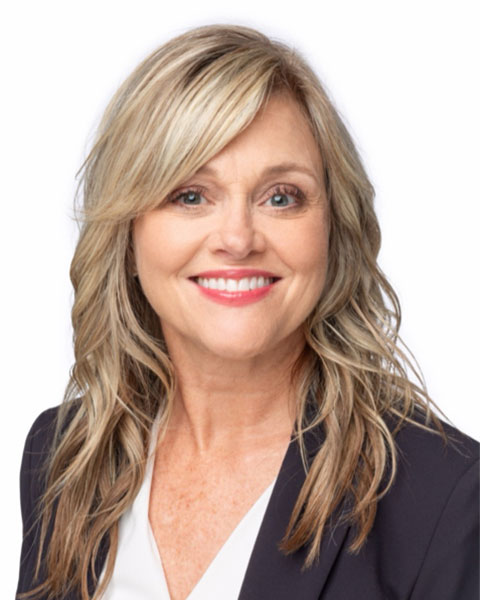
Ms. Shannon Patterson †
(Sponsored by Align)
Change is happening in all industries from banking and shopping to entertainment and all have made efforts to become more digital, highly personalized, and consumer-focused. As consumers grow accustomed to these experiences in retail, their expectations for access and convenience will extend into health/dental care. Today’s orthodontic business model should offer convenience, innovation, and affordability, and be meaningfully different than the traditional care model.
This presentation will explain the current business state, trends, and existing benchmarks of the orthodontic marketplace. Shannon will discuss the facts and trends of the evolving change our industry is experiencing. In addition to presenting up-to-date orthodontic market data, this lecture will identify the major pressures the specialty is facing so practices can adjust, adapt, and advance.
Learning Objectives:
- Identify and analyze current industry benchmarks, trends, and insights and understand practice modality changes.
- Recognize consumer sentiment and spending behaviors to better align orthodontic treatment offerings based on patient preferences and expectations.
- Evaluate potential growth opportunities.
Shannon Patterson, a partner with Bentson Copple Patterson & Associates, is a leading consultant in the orthodontic industry. She works with orthodontists throughout the United States regarding the business aspects of their practice and specializes in practice and career transitions. Shannon is a Kolbe Certified™ Consultant and expert in the Kolbe suite of assessments focusing on strength-based relationships. She is a member of the American Academy of Medical Management (AAMM) and currently serves as a committee member with the AAO. She is a frequent guest lecturer at AAO meetings, regional orthodontic society meetings, orthodontic resident programs, study clubs, user meetings and she contributes to numerous orthodontic journals.

Dr. David Pham
Still taking alginate impressions for retainers or outsourcing to a commercial lab? If your ortho office hasn’t yet made the leap to digital, it’s time to consider this course. Setting up an in-house 3D ortho lab and producing your own retainers can significantly reduce lab fees and increase your profits. This course covers everything you need to get started, from hardware and software to equipment and materials. It also walks you through an efficient, cost-effective workflow for creating high-quality DIY retainers.
Learning Objectives:
- Recognize how establishing an in-house 3D ortho lab can reduce lab fees and increase practice profitability.
- Identify the essential hardware, software, equipment, and materials required to set up a functional 3D ortho lab.
- Describe a streamlined, cost-effective workflow for producing high-quality DIY retainers.
Dr. David Pham earned his master’s degree in Orthodontics from the University of Tennessee Dental Graduate School. He received his D.D.S. from Baylor College of Dentistry and holds a bachelor’s degree from Southern Methodist University in Dallas, Texas. Before pursuing a career in dentistry, Dr. Pham worked in the field of biomedical research and development. He is an active member of several professional organizations, including the American Association of Orthodontists, American Dental Association, California Dental Association, and Orange County Dental Association. Dr. Pham retired from private practice in 2024 and is employed as chief Orthodontist at the Rolling Hills Dental Clinic in Red Bluff, CA.
Dr. Pham’s wife, Pam, is a former Health Information System Specialist and a fellow graduate of the University of Tennessee Health Science Center. Together, they are proud parents of three boys—Hayden, Gavin, and Keegan—and share their home with a beloved dog named Panda.
Outside of his professional life, Dr. Pham is an avid classic car restorer and collector. His passion for automotive restoration has earned him numerous Concours trophies over the years. In 2023, he set a club record with the Ferrari Club of America and the Ferrari Owners Club when his 1985 Ferrari 308 QV GTS won seven trophies in just 13 days across three consecutive shows. Dr. Pham currently serves as an affiliate board member of the Ferrari Club of America Southwest Region and is also a Concours judge for both the Ferrari Club of America and the Ferrari Owners Club.
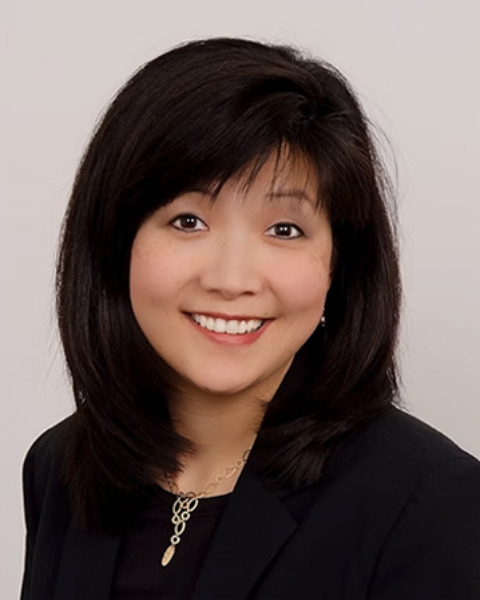
Dr. Stacey Quo
Obstructive sleep apnea (OSA) affects millions of people worldwide, and the orthodontist’s role in the patient’s care ranges from co-diagnosis to co-treatment. This talk will attempt to demystify some of the ambiguity of the role that the orthodontist can serve. Every dental practitioner has patients with sleep disordered breathing abnormalities in their practice, diagnosed and undiagnosed. What are valid metrics to screen patients? Is treatment age dependent? How early should the orthodontist become involved? Understanding the deleterious effects of abnormal breathing on the orofacial complex is a vitally important component in achieving successful orthodontic outcomes. Learning about normal and abnormal breathing and its role in treatment success/failure will become commonplace in the dentist/orthodontist’s armamentarium.
Learning Objectives:
- Answer this question: Is AHI a valid metric of disease?
- Demonstrate if orthodontic mechanotherapy pre-disposes, prevents or even impacts an individual’s risk to develop sleep disordered breathing?
- Determine if facial morphology is predictive of sleep disordered breathing?
- Explore an important but often neglected goal in orthodontics: improving nasal ventilation.
Stacey Quo DDS, MS, maintains a full time private practice in Palo Alto, California, limited to orthodontics. She has been involved in the treatment of sleep disordered breathing (SDB) patients since 1998, and also maintains a position as Adjunct Assistant Clinical Professor at the Stanford School of Medicine’s Sleep Clinic, and as Clinical Professor at the UCSF School of Dentistry. She lectures to the Sleep Medicine Fellowship at Stanford and UCSF School of Medicine. She served as Co-Director of the UCSF Dental Continuing Education Series on Sleep Medicine for Dentists. Treating both adults and children, her practice is a balanced mix of multidisciplinary cases, surgical orthodontics, and early interceptive care. Dr. Quo has extensive experience in treating pediatric and adult SDB. Having published and lectured internationally on the treatment of pediatric sleep disordered breathing in both medical and dental conferences, she also co-authored book chapters on facial growth and treatments for the SDB patient.
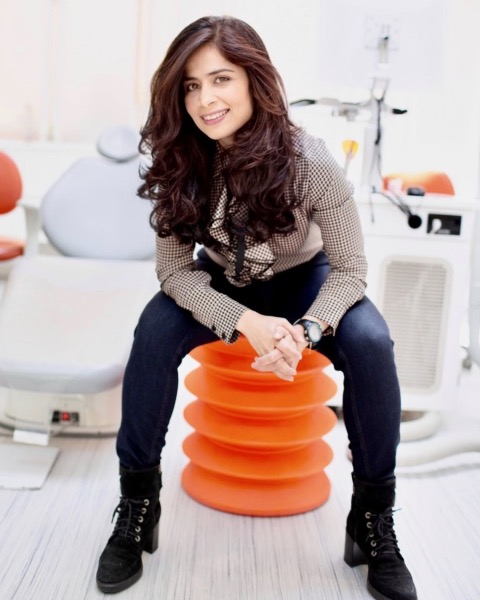
Dr. Parul Taneja
The session focuses on recognizing and understanding the challenges that the leadership faces in a multigenerational workplace. We will discover how Gen Z is flipping the script on traditional workplace organizational structure, about what they value in the workplace and their expectations in the workplace, especially from leaders. You will gain tips on how to utilize this information to alter your current practice dynamics to harmonize the practice environment and enhance staff retention of Gen Z employees. In a rapidly changing digital landscape that lends support to practice agility, the importance of maintaining a robust team will be discussed.
Learning Objectives:
- Understanding generational differences and their impact on the workforce and workplace.
- Exploring the disconnect between Gen Z and current leadership.
- Resolving the disconnect between Gen Z and leadership by optimizing leadership methods and enforcing workplace changes to enhance retention of Gen Z employees in practices.
- Balancing workplace agility and staff retention.
Dr. Taneja has had one foot in the west and one in the east for most of her life. She is an orthodontist by training, with a passion for science, a seeker by nature and the drive of an athlete. She received her DMD from Boston University Henry Goldman School of Dental Medicine and her Masters and speciality certificate from the University of Oklahoma. She and her practice partner own two practices in the Greater Boston area. She was a Clinical Assistant Professor at Tufts University for a decade. She guest lectures at Tufts and at BU. She is the recipient of the “Ten Under Ten” award from the Massachusetts Dental society awarded for contributions to dentistry within the first ten years of practice. She has authored several articles in peer reviewed journals. She has also written a chapter on inter-disciplinary care in the textbook “Diagnosis and Management of Malocclusion and Dentofacial Deformities” published by Elsevier. Dr. Taneja believes that both practice and life are best approached with equanimity and a robust sense of humor. For leisure, she likes to explore water bodies through open-water swimming and dancing Argentine tango.
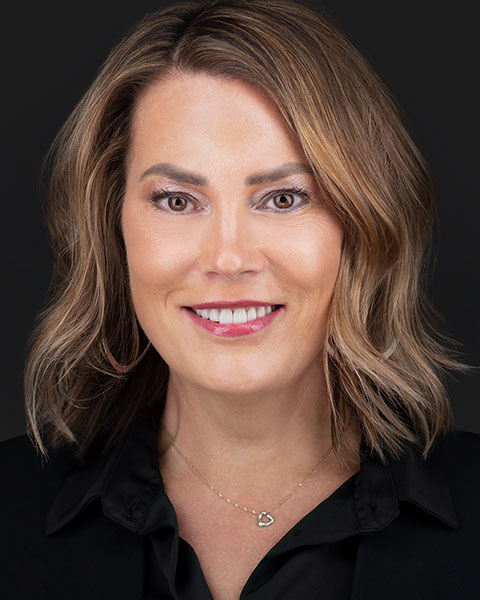
Ms. Lori William †
In this engaging session, the audience will discover the power of building meaningful connections and understand how fostering an environment of trust and comfort empowers patients to make buying decisions, leading to higher treatment acceptance.
Participants will also learn the critical role of timely follow-up in preventing opportunities from spoiling and avoiding the “brown banana” effect in the New Patient cycle. They will leave with actionable strategies to enhance patient engagement and drive practice success.
Learning Objectives:
- Build powerful connections with new patients, creating an environment of trust and comfort that ultimately results in treatment acceptance.
- Utilize the skills and strategies to confidently ask for the sale, communicate the value of treatment, and guide new patients toward saying “yes” to their future smile with clarity and professionalism.
- Turn “no’s” and “not nows” into “yes’s” with timely follow-up, ensuring opportunities don’t spoil like bananas turning brown.
The children’s fable “The Little Engine That Could” embodies willpower, determination, and perseverance—qualities that perfectly reflect Lori William’s journey and approach. With over 30 years of hands-on experience and a commitment to learning from the best, Lori applies these principles to help orthodontic practices achieve their full potential.
As a partner at Strategix, Lori works exclusively with orthodontic offices to maximize efficiency and streamline operations. Having worked in every aspect of an orthodontic practice, she has a proven track record of overcoming challenges and systematizing processes for lasting success. Lori’s mission is to help practices shift their mindset from “I think I can” to “I know I can.”
Lori’s passion lies in tailoring proven strategies to fit the unique needs of each practice. She believes business success is both a science and an art, and she empowers teams to find fulfillment by aligning processes with their goals. Her contagious energy and collaborative approach inspire teams to rediscover their passion for creating smiles and achieve the outcomes they desire.
By listening to your objectives, understanding your challenges, and leveraging the tools already at your fingertips, Lori partners with you to overcome obstacles and unlock your practice’s full potential. Sharing her wealth of knowledge and experience, Lori lives her passion—helping orthodontic teams rise to new heights and become the best they can be.
Saturday's Speakers
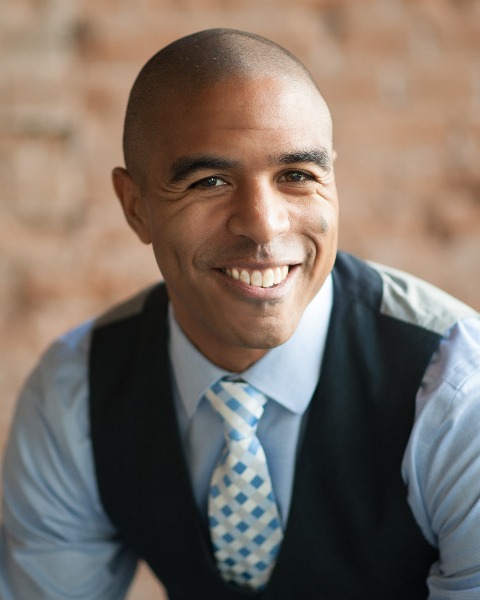
Mr. Eric M. Bailey †
Economists tell us that given the opportunity, people will behave rationally. If you’re anything like me, you have countless examples DAILY of people behaving irrationally! What would the world look like if we could cure the stupidity around us? Imagine freedom from frustration. Imagine the peace. This session, based on Eric M. Bailey’s bestselling book, can fix that. This session can change your life.
Learning Objectives:
- Explore the difference between perception and reality, and the impact they have on communication.
- Overcome the natural barriers to understanding. When you say something clearly, they hear something completely different.
- Recognize the motivations behind the seemingly ‘irrational’ behavior of others.
- Improve even the most difficult personal and professional relationships.
Eric M. Bailey is the bestselling author of The Cure for Stupidity: Using Brain Science to Explain Irrational Behavior and President of Bailey Strategic Innovation Group, one of the fastest-growing human communication consulting firms in the United States. Eric has a diverse set of experiences that includes helping NFL All-Pro Larry Fitzgerald pet a rhinoceros, doing barrel rolls in an F-16, and chatting with LL Cool J on the campus of Harvard University.
Honored as Diversity Leader of the Year, Eric is the creator of the Principles of Human Understanding™, a leadership and communication methodology based in brain science. Eric’s unique style blends fact and emotion finding ways to appeal to the analytical thinkers, the emotional feelers, and everyone in between . Eric has a unique ability to communicate complex concepts in practical, easy-to-comprehend ways, aiding in self-awareness and knowledge retention.
Eric has been featured on CNN, Wall Street Journal, Fox, Huffington Post, Forbes, and has helped leaders and teams across the world see common problems from new and different perspectives. Eric works with Google, US Air Force, LA County, the City of St. Louis, MO, Phoenix Police Department and many more. Eric also runs a YouTube series of 2-minute executive lessons called The Walking Meeting.
Eric has a Master’s degree in Leadership and Organizational Psychology from Saint Louis University and is a lifetime learner of human and organizational behavior. When not working or researching, you can find Eric and his wife Jamie playing pickleball with their three children.
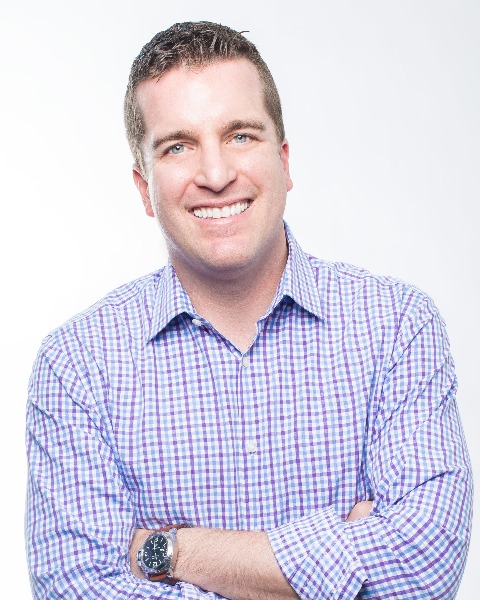
Dr. Dan Bills †
(Sponsored by DentalMonitoring)
Achieving clinical excellence has always been, and should always be, our number one priority as Orthodontists. However, clinical efficiency, as long as it does not come at the expense of clinical excellence, is equally as important and all too often ignored. As is true in all professions and industries, today’s Orthodontic patients expect technology based, personalized conveniences. And as labor and material costs continue to rise in our profession, eliminating unnecessary appointments is essential to maintaining profitability without significant fee increases. Simply put, if we can treat a patient in fewer visits in less time, while at the same time achieving optimal levels of clinical excellence, everybody wins — patient, parents, and Orthodontist. We are practicing during an amazing time in the history of orthodontics with new technologies emerging daily. Some of these innovations are merely hype and may actually increase the workload of the Orthodontist, while others are incredibly powerful tools to improve the quality of our clinical care as well as our clinical efficiencies and effectiveness. This lecture will focus on technology based orthodontic solutions that will allow you to work smarter and live better. It will dive deep into the incredible power of clinical efficiency and how it relates to patient experience, clinical excellence, and practice profitability. And it will prove, once and for all, that clinical efficiency and clinical excellence are not mutually exclusive!
Learning Objectives:
- Master the fundamental formula to evaluating the efficiency of your current clinical systems.
- Discuss proven, technology-based clinical strategies to improve clinical efficiency while also improving clinical excellence.
- Review the power of clearly defined treatment plans to ensure efficiencies are followed by all team members.
Dr. Dan Bills is an avid (yet barely competent) golfer, boater and skier who enjoys spending as much time as possible with his wife Emily and his daughter Caroline. Dr. Bills received his Bachelor of Arts degree in Biology from Lafayette College and his dental degree from Harvard University, both with Honors, after which he completed a three-year orthodontic residency at the University of Illinois. He is a Board Certified Diplomate of the American Board of Orthodontics and a Fellow of the American College of Dentists. He founded and maintains a state-of-the-art practice, Innovative Orthodontics, with three locations in Southern New Jersey, just outside of Philadelphia. He is on Faculty at Harvard University and at the University of Pennsylvania, where he has been honored as “Teacher of the Year”. He lectures regularly at academic institutions and orthodontic meetings, both stateside and abroad, and gives in-office courses about a variety of clinical topics as well as how to better utilize technology in the orthodontic office. One of his greatest passions is teaching his colleagues how to work smarter and, consequently, live better.
Dr. Rebecca Bockow & Ms. Tricia Rogers †
Anterior open bites represent a complex clinical challenge requiring an integrated approach to treatment. This lecture explores the critical intersection of orthodontics and myofunctional therapy in addressing open bite management. By demonstrating how structural corrections must be coupled with functional retraining, we illuminate the principle that “form follows function.”
This presentation will examine the characteristics of healthy and unhealthy orofacial systems, highlighting how tongue dysfunction can contribute to anterior open bite development. We will present evidence-based strategies for combining orthodontic growth guidance with myofunctional therapy techniques.
Through case studies and current research, we will demonstrate how interdisciplinary collaboration between orthodontists and myofunctional therapists can achieve more stable, predictable outcomes in open bite treatment. Participants will gain practical insights into comprehensive, patient-centered care strategies.
Learning Objectives:
- Understand the interplay between orofacial structure and function in the development and treatment of anterior open bites.
- Recognize the importance of interdisciplinary collaboration between orthodontists and myofunctional therapists in achieving optimal treatment outcomes.
- Identify key strategies for integrating orthodontic and myofunctional approaches in the management of open bites.
Dr. Rebecca Bockow received her dental degree from the University of WA School of Dentistry. Upon graduation, Dr. Bockow practiced as a restorative dentist in Seattle. In 2013, she completed her dual training in both Orthodontics and Periodontics from the University of Pennsylvania School of Dental Medicine, where she also earned a Masters in Oral Biology.
Dr. Bockow is a board-certified orthodontist and periodontist. She is a resident faculty at Spear Education, and lectures to audiences internationally on topics including interdisciplinary treatment planning, airway and sleep disorders, skeletal growth and development, surgical treatment planning, and TAD supported expansion.
Dr. Bockow maintains a private practice in Seattle and Bellevue, limited to orthodontics.
Tricia H. Rogers, MS-CCC, is a certified speech-language pathologist. In her private practice, she has spent the past 20 years assessing and treating orofacial myofunctional disorders. Tricia is deeply committed to collaborating with orthodontists, dentists, and other medical professionals, reflecting her passion for fostering strong partnerships that enhance client care.
Most recently, Tricia authored a series of myofunctional therapy books designed to empower children to develop healthy oral myofunctional habits. These books have expanded her impact beyond individual care, enabling her to educate many more children than she could through one-on-one sessions.
Tricia earned a Master of Speech Pathology from the University of South Carolina and currently resides in Beaverton, Oregon.
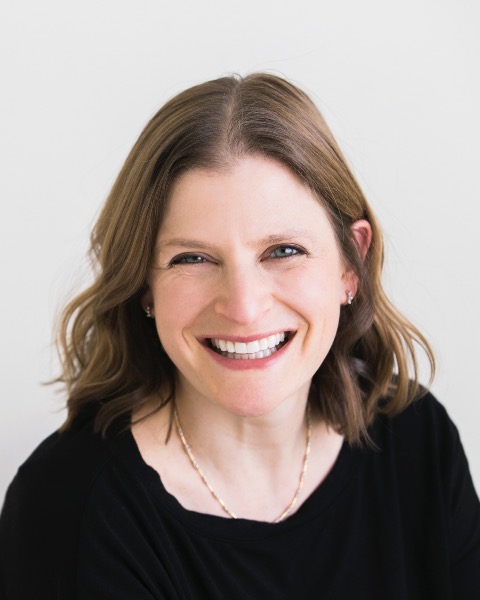
Rebecca Bockow
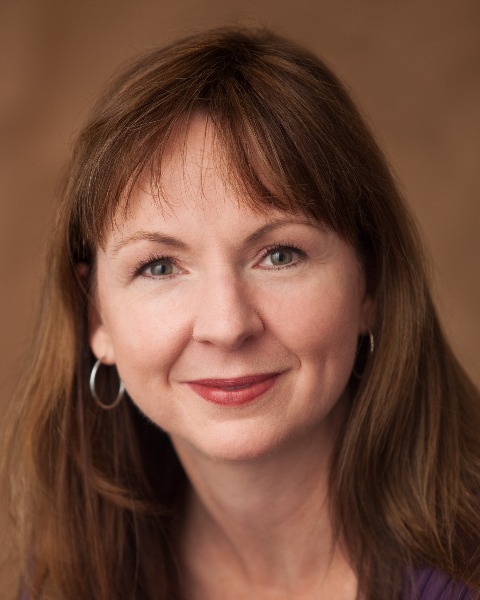
Tricia Rogers
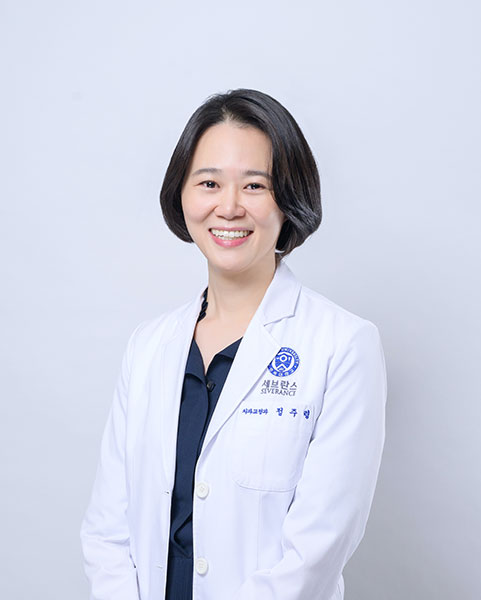
Dr. Chooryung
Judi Chung
As an orthodontist, we do our best to provide the most functional as well as esthetic treatment outcome regardless of patients’ age. However, in reality, comprehensive orthodontic treatment for adults with skeletal discrepancies is classified by definition, “camouflage” treatment unless surgery is accompanied. This seems like an unfair definition in the era of dentofacial orthopedics of all ages.
With the help of TADs, dentofacial orthopedic protocols including maxillary expansion, clockwise or counterclockwise rotation of the mandible is considered an effective option to achieve non-surgical skeletal changes even for non-growing adults. In this lecture, proper diagnosis, clinical fundamentals and management tips to achieve non-surgical orthopedic effects through transverse, vertical and AP control of tooth movement in adult Skeletal Class II and Class III malocclusion will be shared.
Learning Objectives:
- Identify indications to induce skeletal expansion, active clockwise or counterclockwise rotation of the mandible to improve adult skeletal malocclusion.
- Recognize differences in orthodontic management and biomechanical benefits of TADs induced dentofacial orthopedic protocols.
- Critically appraise the benefits of adult dentofacial orthopedics and its esthetic outcome.
Dr. Chooryung Judi Chung, a professor and Chair at the Department of Orthodontics, Gangnam Severance Hospital, Yonsei University College of Dentistry, Seoul, Korea received her DDS from Yonsei University and her orthodontic training and Ph.D at Tokyo Medical and Dental University, Tokyo, Japan. She was a visiting scholar at University of North Carolina at Chapel Hill. Her clinical and research interests include the clinical application of TADs, digital orthodontics and interdisciplinary dentofacial orthopedics for adults.
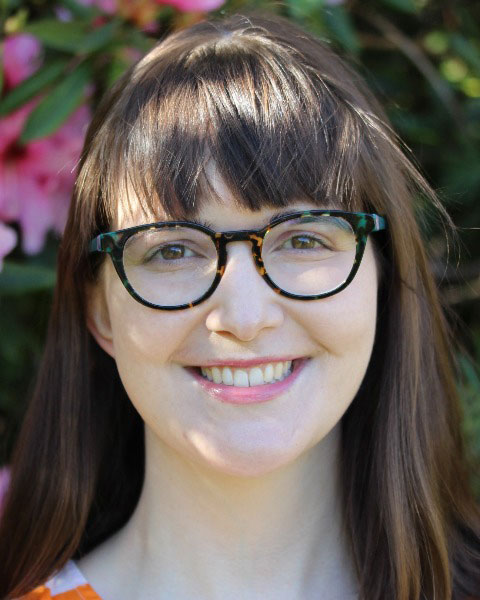
Dr. Fiona Firth †
Orthodontists routinely provide specialist advice about “compromised molars”, yet for many the finer details – including important differences between “hypoplastic molars”, “hypomineralized molars”, “MIH” and “MH” – remain fuzzy at best. Fortunately, such confusion has been comprehensively addressed under the new era of “Molar Hypomineralization” (MH) and “Chalky Teeth”, which uses a novel translational paradigm embracing stronger science, better practice and social good. These far-reaching advances warrant evolutionary adaptations for the dental profession, including orthodontic practitioners, industry and policymakers [1].
This presentation introduces the so-called “MH-Chalky Teeth Problem” and outlines groundbreaking attacks being conducted by an international translational network for Developmental Dental Defects (DDDs = “D3s”) that includes orthodontist associations from “Down Under” (ASO, NZAO). Key implications for orthodontists – including communication, clinical practice, and interprofessional relations – will be highlighted.
Reference
1. Childers NK, Hubbard MJ. Adopting The D3 Group’s Translational Paradigm for Molar Hypomineralization and Chalky Teeth. Pediatr Dent. 2024;46(5):302-304. Free download at PMID: 39420495.
Learning Objectives:
- Explain D3 terminology – chalky teeth, D3s, MH, science translation to social good
- Articulate the 3-level ‘MH-Chalky Teeth Problem’ and implications for orthodontics.
- Correlate today’s science-driven translational attack with orthodontic opportunities.
Fiona hails from New Zealand (NZ) where she is a practising orthodontist, university academic, and ambassador of The D3 Group (D3G) for developmental dental defects (D3s).
She studied dentistry and orthodontics at NZ’s University of Otago, and earned Orthodontics College Memberships in Australasia and the UK (RACDS, RCSEd), Australasian Orthodontics Board Certification, and an Australasian College Fellowship in General Dental Practice. Today Fiona practices orthodontics in her own specialist practice and at Otago Dental Hospital where she manages the craniofacial clinic.
As a senior lecturer at the University of Otago, Fiona teaches postgraduate and undergraduate orthodontics, and conducts research into tooth movement, craniofacial biology and molar hypomineralization. Her academic publications have attracted over 175 citations and elicited multiple speaking engagements in NZ and abroad. Fiona has also supported NZ’s Orthodontists’ Association (NZAO) as newsletter editor.
Wearing her D3G hat, Fiona serves as liaison officer for NZAO’s participation in the ‘We Fight Chalky Teeth Network’ (a new branch of D3G’s ‘Chalky Teeth Campaign’). In 2023, she co-led the NZAO-D3G mini-symposium on Molar Hypomineralization and Chalky Teeth. Fiona also contributed a highly-read article on orthodontic considerations to a D3G Special Feature on Molar Hypomineralization and Chalky Teeth published by the NZ Dental Association (available from D3G’s website).
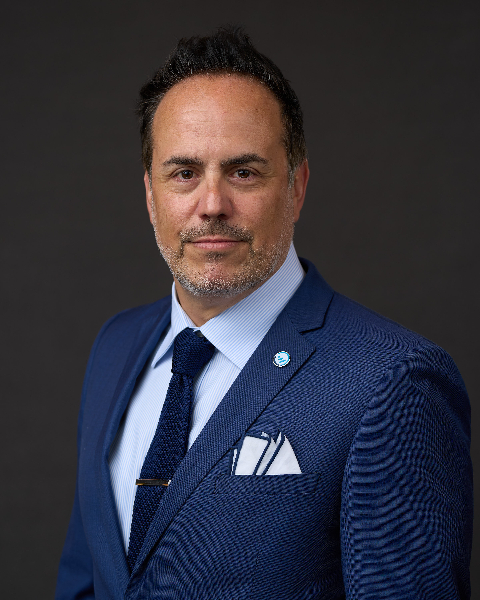
Mr. Oliver Gelles †
(Sponsored by OrthoFi)
In today’s challenging economic landscape, orthodontic practices must leverage data-driven strategies to achieve sustainable growth and mitigate risk. Join us for an insightful course designed to help you unlock more of the $5 Trillion annual potential in the orthodontic market. By getting the whole team rallied around critical metrics to boost patient conversions and optimize cash flow, you will walk away with actionable steps to navigate financial pressures while ensuring long-term success.
Learning Objectives:
- Recognize how patient demographics are changing and requiring new strategies.
- Discover how Open Choice and a more expansive look at average fees can help you find untapped potential for revenue growth.
- Explore how Intelligent Flexibility is essential to help the team manage cash flow effectively and reduce financial risk.
- Identify which leading and lagging practice metrics drive scalable performance and profitability.
- Master the full-contact team approach to juicing conversion rates and driving more same-day starts.
Oliver Gelles is the Chief Marketing Officer for OrthoFi and OrthoBanc. Widely recognized as one of the industry’s foremost strategic brand-building experts, he has over 20 years of experience in the orthodontic industry, contributing to continuing education events and technology innovation for nearly a decade. Oliver’s recently published book on practice management, Level the Curve, is a #1 bestseller in six categories on Amazon. With a passion for orthodontics, Oliver leverages his business acumen to lecture around the world on many of the core concepts that prompted the creation of OrthoFi.
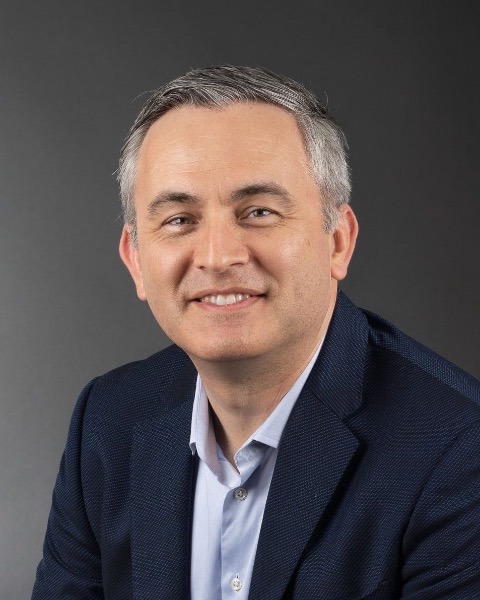
Dr. Sean Holliday †
Clear aligner therapy has evolved from simple tooth alignment to managing complex orthodontic movements through sophisticated biomechanical systems. This comprehensive lecture explores the intricate relationship between force application, tooth movement, and treatment predictability in challenging cases. Drawing from contemporary research and clinical experience, we’ll examine how force thresholds, attachment design, and staging patterns can optimize treatment outcomes. Participants will gain practical insights into managing complex movements, including anterior torque control, lateral incisor movements, multi-tooth force systems, and extraction space closure using clear aligner therapy. Through case presentations and biomechanical analysis, this course will provide clinicians with actionable strategies to enhance their clear aligner treatment planning and execution.
Learning Objectives:
- Apply fundamental biomechanical principles to optimize force systems in clear aligner therapy for complex tooth movements.
- Evaluate and implement appropriate attachment designs and placement strategies based on specific tooth movement requirements.
- Develop effective staging sequences that maximize treatment efficiency while maintaining optimal force levels.
- Identify and manage potential biomechanical challenges in complex cases, including extraction space closure and anterior torque control.
Dr. Sean Holliday earned his dental degree from the University of Missouri-Kansas City and his orthodontic certification and master’s degree from the University of Illinois at Chicago. Dr. Holliday is a board-certified Diplomate of the American Board of Orthodontics, a published author, and a public lecturer. He is a contract advisor for Align Technology, and Holliday Orthodontics is an Invisalign® Diamond Plus Apex provider, #1 Invisalign provider in the Western United States, and has treated over 11,000 clear aligner cases and is involved in various clinical research in digital orthodontics. He is a Journal of Clinical Orthodontics Clinical Advisory Council Member, serves on the boards of several dental organizations, leads and operates four orthodontic offices on the island of Oahu.
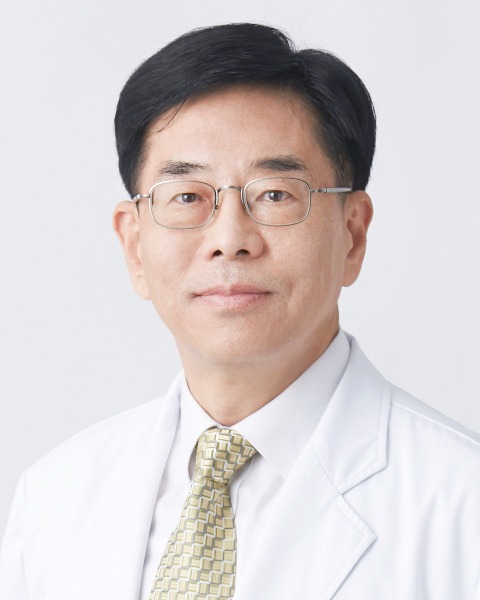
Dr. Tae-Woo Kim
Since 2007, Dr. Kim has spoken about the TAD technique in the AAO, especially for the open bite treatment. Six methods were introduced.
The best method includes one mid-palatal TAD with intrusion TPA (Method 5). In some cases, two maxillary buccal TADs were added (Method 2). The step-by-step procedures, materials, instruments, and treatment know-how will be shared. Based on 20 years of experience, he will present the cases so that even beginners can easily follow them without difficulty.
Method 5 shows an excellent bite-closing effect using only one mid-palatal TAD. However, there are cases where Class II canine/molar relation and overjet open bite remains. Method 2 is used in this case by adding two buccal TADs to the maxilla. Method 6 is a method that can intrude the molar area of the mandible. However, when TAD cannot be implanted in the mandible, MEAW is used instead.
Learning Objectives:
- Determine how to place the mid-palatal TPA, how to design the intrusion TPA, and how to modify it for the treatment of open bites using TADs.
- Recognize the reliable methods to avoid the troubles in treating open bites using TADs.
- Comprehend the clinical methods to overcome the problems during the treatment of open bites using TADs.
Tae-Woo Kim is an Emeritus Professor in Orthodontics at Seoul National University (SNU), where he completed his orthodontic specialty training. After serving as a Korean army dentist for three years (Captain), he started his academic career as a full-time clinical instructor at the Dept. of Orthodontics, the SNU dental hospital. He was chairman of the SNU orthodontic department.
He was a visiting scholar at the University of Washington(1995-1997, 2011) and UCLA(2007). He was a visiting scholar at the Forsyth Institute (2021-2023). He was the editor-in-chief of the Korean Journal of Orthodontics(KJO) for many years. He was President of the Korean Association of Orthodontists and President of the Korean Association of Orthodontists Foundation.
He received the Kwansong Award from the Korean Association of Orthodontists. In 2018, he gave the Kokich-Shapiro lecture at the University of Washington. He is a regular member of the Northwest Component of the Edward H. Angle Society EHASO.
He is currently a clinical associate professor at NYU Orthodontics.
His focused research fields are TMD, open bite, TADs, and long-term stability. He was invited as a speaker by more than thirty countries.
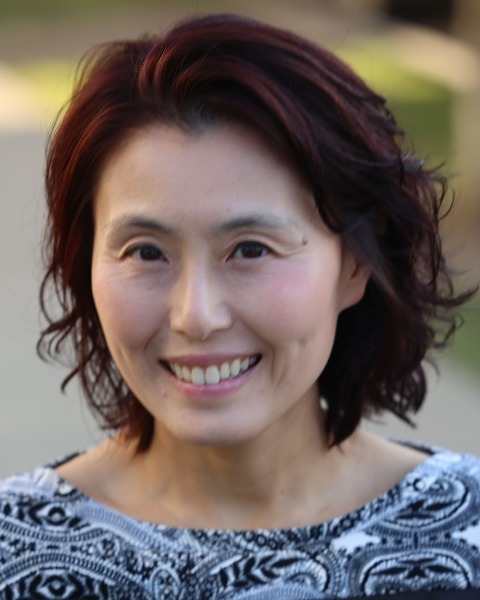
Dr. Phoebe Tsang
Effective collaboration between pediatric dentists and orthodontists is essential for addressing the complex challenges of developing smiles. This presentation highlights how orthodontic expertise complements pediatric dental care, focusing on key areas where interdisciplinary input is critical to achieving optimal outcomes.
Pediatric dentists frequently encounter cases that benefit from early orthodontic guidance, even when active intervention is not immediately required. This session will showcase scenarios where orthodontic input helps inform treatment decisions, for examples, second molar substitution for hypoplastic first molars requiring extraction, ectopic eruption of permanent molars and canines, and space maintenance for congenitally missing teeth or early loss of primary teeth.
By working together, pediatric dentists and orthodontists can create comprehensive care plans that address both immediate concerns and long-term oral health goals. Orthodontists will leave with a deeper understanding of their role in enhancing pediatric dental care and practical strategies to strengthen interdisciplinary collaboration for improved patient outcomes.
Learning Objectives:
- Identify clinical situations where early orthodontic input is critical in guiding pediatric dental treatment.
- Explore evidence-based approaches for managing some of the complex pediatric dental cases, including the timing and coordination of interventions to optimize oral health outcomes.
- Develop strategies for effective communication and collaboration between pediatric dentists and orthodontists to create comprehensive, patient-centered care plans.
Dr. Phoebe Tsang is a Fellow of the Royal College of Dentists of Canada in Pediatric Dentistry, a Diplomate of the American Board of Pediatric Dentistry and a Certified Specialist in Pediatric Dentistry in BC. She has specific interests in microbiology which led to her pursuit of PhD in oral biology at UCLA. She has been appointed as a Clinical Associate Professor at UBC Faculty of Dentistry. She is a member of the American College of Dentists and International College of Dentists. Besides practicing dentistry at her private practice in Vancouver, she also teaches a pediatric dentistry graduate program at BC Children’s Hospital and UBC.
Mr. Rick VanDermyden, Mr. Joe DiPenta, Mr. Kris Hamilton, Mr. Kris Snyder †
(Sponsored by EOS)
Orthodontic practices thrive when the entire team is aligned, efficient, and empowered—not just the doctor. But common challenges like communication breakdowns, unclear roles, and bottlenecks can slow growth and create frustration.
In this interactive session, discover how the Entrepreneurial Operating System (EOS) provides a simple, proven framework to help orthodontic teams gain clarity, accountability, and execution in all areas of the practice—from patient flow and team dynamics to hiring, marketing, and financial health. This engaging discussion, featuring expert panelists both in-person and via Zoom, will provide actionable strategies to create a smoother, more scalable, and successful ortho practice.
Join us to learn how EOS can help your entire team—doctors, managers, and staff—work smarter, not harder!
Panel Discussion with In-Person & Virtual Experts
Learning Objectives:
- Gain Clarity & Alignment: Learn how to get everyone on the same page with a shared vision.
- Increase Efficiency & Accountability: Reduce bottlenecks and empower every team member.
- Describe how to apply EOS concepts into an orthodontic practice.
Hello – I’m Rick and I grew up in an entrepreneurial household which translates into being the cheapest labor available! From spending every school break on a tractor seat to handling sales and marketing for my dad’s development company, I experienced the successes and failures of an entrepreneurial business.
After a stint in corporate America, the passion to determine my own course took me back to my entrepreneurial roots. Leading five companies through the 2006-2009 real estate crash led to 1 spectacular failure, 2 that were saved after being on life support and 2 that weathered the storm. The lessons learned during that time were both valuable AND expensive.
Transitioning into an ownership position allowed me to pursue my passion of leadership development. Through leadership consulting, I was introduced to “Traction” by one of my leadership clients. The book provided an operating system to help entrepreneurs ACTUALLY implement the ideas that I had learned for years.
EOS seamlessly combined my passions to not only develop better leaders, but to help business leaders get what they want from their business. Better yet, to help them create the life they’ve always wanted!
Meet Joe DiPenta – a trailblazer in the world of professional hockey and business leadership. In 2007, he brought the Stanley Cup to his hometown of Cole Harbour, Nova Scotia, predating even Sidney Crosby’s triumph in 2009. Recognized for his achievements, Joe joined the Nova Scotia Sports Hall of Fame in 2023.
Beyond the sports arena, Joe is a devoted husband of 19 years to Jessica and has been a hands-on coach for his 12-year-old daughter Chloe’s hockey team. Professionally, he’s an EOS Implementer, finding joy in helping clients achieve 18% YoY growth, fostering a positive work culture, and allowing more quality time with family.
With 24 years of experience, Joe has thrived in leadership roles, both as an entrepreneur and a Vice President. As an EOS Implementer, he attained certified status swiftly, boasting a solid track record with an average session rating of 9.25 across 30 organizations. Joe’s success stems from his commitment to systems, drawn from his extensive background in professional sports and business.
Today, Joe DiPenta shares his insights on leadership and the transformative impact of effective systems.
Kris is a seasoned sales and talent strategy consultant with over 15 years of experience advising growing companies. For the past decade, he’s served on the leadership team at Titus, helping organizations align their people strategy with business outcomes. Kris brings a sharp eye for identifying talent, a relational style rooted in curiosity and empathy, and a proven track record of building teams that perform. He’s especially passionate about shaping hiring strategy and equipping organizations to lead with clarity and purpose.
Outside of work, Kris lives in San Diego with his wife and three kids. He’s a devoted dad who loves trail running, outdoor adventures, and building a life rooted in faith, family, and meaningful work.
Kris Snyder is a seasoned leader with a proven track record in building and scaling six companies. His deep expertise in organizational growth was significantly shaped through his work as an EOS Implementer, where he has guided over 50 companies through more than 400 session days, helping them implement robust Business Operating Systems. Kris’s journey with Ninety began in its early stages (2018-2025), where he served as the CFO for 3 years and revenue/CRO for 6 years during its remarkable growth. Working with the team, his insights and leadership have been instrumental in transforming Ninety from an early stage company into a thriving software platform that empowers 16,000+ organizations to focus, align, and thrive.
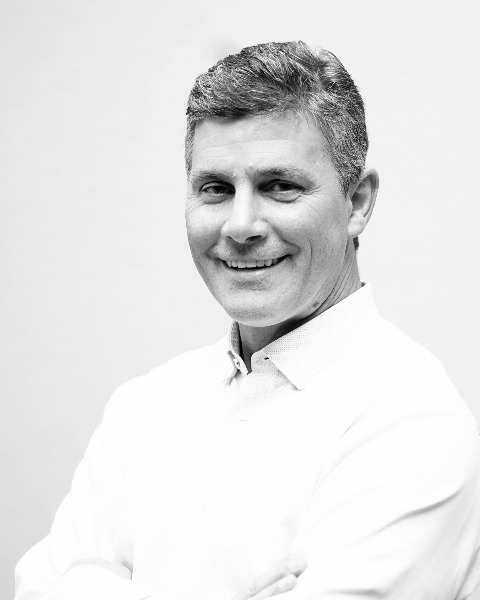
Rick VanDermyden
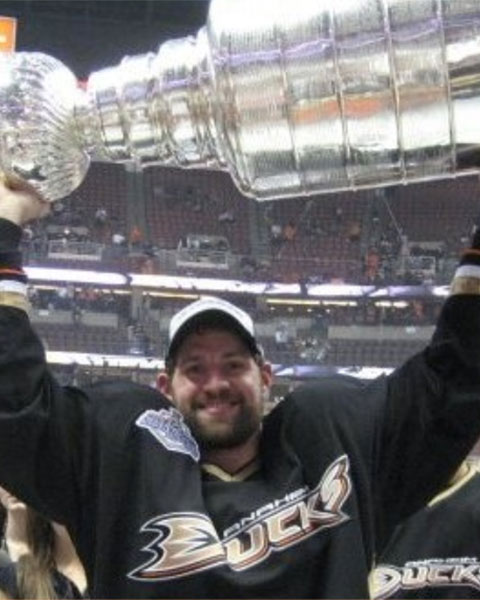
Joe DiPenta
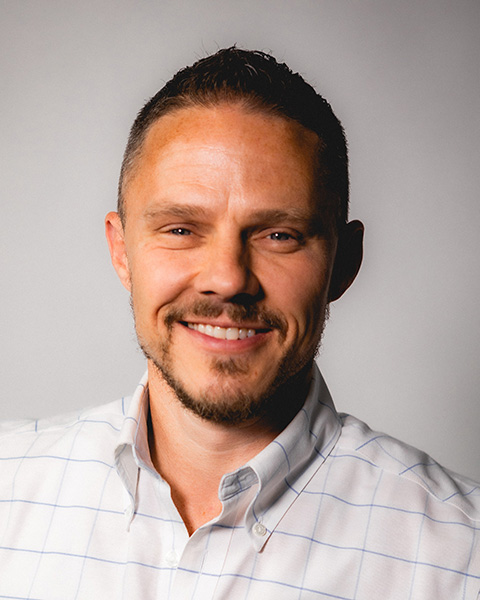
Kris Hamilton
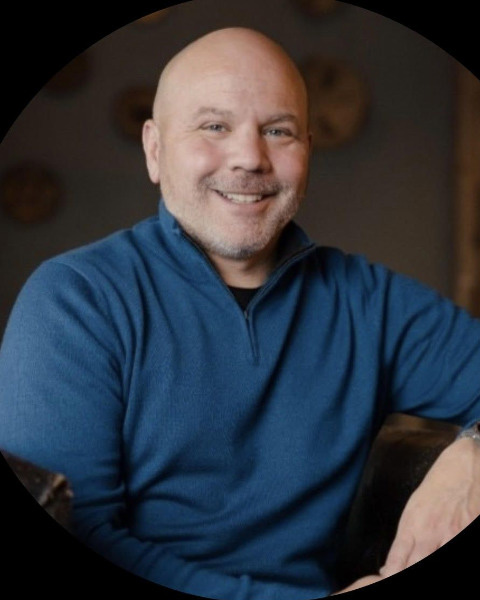
Kris Snyder